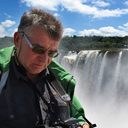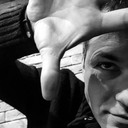0 Likes
ماشین و اتومبیل
کمتر موضوعی است که تبدیل به دغدغه برای هنر و هنرمند نشده باشد، خواه از منظر ریختی، خواه محتوایی. دست مالی کردن سوژه تبدیل به فندی فاخر شده که همه تمام قد برای دفاع از خود در برابر خود علم میکنند؛ روندی که گاه پیرو برساخت اجتماعی هنر است و گاه خاستگاهش بازار هنری، که البته هر دو در صدد پیشبرد کنش هنری هستند.
از زمان ورود اتومبیل به ایران بیش از ۱۰۰ سال میگذرد و از ورودش به عرصه هنر شاید ۵۰ سال. شاید بتوان گفت شروع شاعرانه با "فیات نقاشی شده حسین زنده رودی" به سال ۱۳۴۰ آغاز شد، زمانی که کمتر کسی ماشین را زمینه ای میدانست در حیطه کار هنری؛ در دوره های بعد تر ماشین دغدغه ای جدی برای برخی به حساب آمد، مثالش "سحابی" فقید، منتها کمتر هنرمندی بود که توجهش جلب شود به چرائی این ورود، اما فصل نو، باری نو به همراه داشت. حالا ماشین نه تنها وسوسه ای شده برای هنر بلکه سوژه ای ست برای چالش ها و نشست های دور همی، از چیدمان های خصوصی تا کارهای گروهی.
این واکاوی در سوژه گاه با پس زدگی های زندگی اجتماعی حاصل میشود، زندگی در جامعه ای که همه در آن با نگاهی واپس گرا در پی کشف آینده ای گنگ به سر میبرند و به طور مداوم در پی کشف و شهود بازاری متلاطم هستند؛ در این بین اما بودند کسانی که لااقل در دوره ای منسجم از کارهایشان این تکه پاره ی آهنی را مبنا قرار دادند و با تکیه بر اصول و فضای کاری خودشان تصویری برای بیننده فراهم آوردند، تصاویری در قاب هایی متفاوت از مدیاهای گوناگون؛ نقاشی، عکاسی، حجم و ویدئو. آثاری که در پسشان حوصله ای بیشتر از
“Machine, Automobile,”
Contemporary artistic practice seems to have few qualms over what it takes as subject—from the most commoditized or banal objects to the most rarified material, nearly any matter is now capable of supplying content and inspiring form. “Machine, Automobile,” explores the car’s explosive prominence over the past half-century, asking what commonalities emerge from the car’s centrality in a range of artistic practice while engaging the incommensurable diversity in the works’ aesthetic form and pictorial concerns.
The car entered Iran about one hundred years ago, integrating itself into social life and, roughly fifty years later, into art. Charles Hossein Zenderoudi’s Fiat (1961) was a first to break pictorial convention by establishing the car as a painterly subject. Denoting the car as a fact of social life, and carrying with its artistic representation the cultural shifts of an increasingly industrialized and globalized Iran, Zenderoudi’s painting was the first in a proliferation of artistic works that take the car as a romanticized object, compelling artistic form, or quotidian fact of an urbanized landscape.
Understanding the car’s import within the varied artistic oeuvres on view in “Machine, Automobile,” demands we ask what social and artistic considerations, individual desires in the present, and collective ideals for the future, converge in the representation of this metal machine. While we could seek a more sociological analysis attempting to qualify and analyze the magnetic fascination galvanized by the car, or look to the artistic market and ask whether the prominence of the car’s image is driven by popular demand, such explanations would reduce the intriguing complexity and nuance of the car’s place in life and in art. Suffice to say that the only justification that holds true—inexplicably, yet continually, compelling—is just that of the car.
نمایشگاه گروهی " ماشین ، اتومبیل " با گردآوری " حسین سلطانی " دی 1392 گالری شیرین
...





Overview and HistoryTehran is the capital of Iran and the largest city in the Middle East, with a population of fifteen million people living under the peaks of the Alborz mountain range.Although archaeological evidence places human activity around Tehran back into the years 6000BC, the city was not mentioned in any writings until much later, in the thirteenth century. It's a relatively new city by Iranian standards.But Tehran was a well-known village in the ninth century. It grew rapidly when its neighboring city, Rhages, was destroyed by Mongolian raiders. Many people fled to Tehran.In the seventeenth century Tehran became home to the rulers of the Safavid Dynasty. This is the period when the wall around the city was first constructed. Tehran became the capital of Iran in 1795 and amazingly fast growth followed over the next two hundred years.The recent history of Tehran saw construction of apartment complexes and wide avenues in place of the old Persian gardens, to the detriment of the city's cultural history.The city at present is laid out in two general parts. Northern Tehran is more cosmopolitan and expensive, southern Tehran is cheaper and gets the name "downtown."Getting ThereMehrabad airport is the original one which is currently in the process of being replaced by Imam Khomeini International Airport. The new one is farther away from the city but it now receives all the international traffic, so allow an extra hour to get there or back.TransportationTehran driving can be a wild free-for-all like some South American cities, so get ready for shared taxis, confusing bus routes and a brand new shiny metro system to make it all better. To be fair, there is a great highway system here.The metro has four lines, tickets cost 2000IR, and they have segregated cars. The women-only carriages are the last two at the end, FYI.Taxis come in two flavors, shared and private. Private taxis are more expensive but easier to manage for the visiting traveler. Tehran has a mean rush hour starting at seven AM and lasting until 8PM in its evening version. Solution? Motorcycle taxis! They cut through the traffic and any spare nerves you might have left.People and CultureMore than sixty percent of Tehranis were born outside of the city, making it as ethnically and linguistically diverse as the country itself. Tehran is the most secular and liberal city in Iran and as such it attracts students from all over the country.Things to do, RecommendationsTake the metro to the Tehran Bazaar at the stop "Panzda Gordad". There you can find anything and everything -- shoes, clothes, food, gold, machines and more. Just for the sight of it alone you should take a trip there.If you like being outside, go to Darband and drink tea in a traditional setting. Tehranis love a good picnic and there are plenty of parks to enjoy. Try Mellat park on a friday (fridays are public holidays), or maybe Park Daneshjou, Saaii or Jamshidieh.Remember to go upstairs and have a look around, always always always! The Azadi Tower should fit the bill; it was constructed to commemorate the 2500th anniversary of the Persian Empire.Tehran is also full of museums such as:the Contemporary Art Museumthe Abghine Musuem (glass works)the 19th century Golestan Royal Palace museumthe museum of carpets (!!!)Reza Abbasi Museum of extraordinary miniaturesand most stunning of all,the Crown Jewels Museum which holds the largest pink diamond in the world and many other jaw-dropping jewels.Text by Steve Smith.